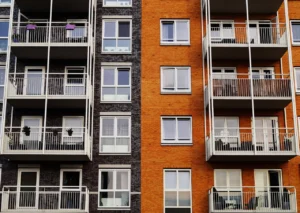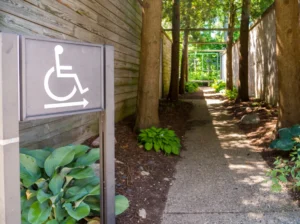After the end of pandemic aid and eviction moratoriums, things are either up to pre-pandemic norms or far over.

The Renewed Face of Housing Is Tenant Evictions
Evictions seem on the rebound after an extended period of moratoriums and pandemic economic aid to tenants.
According to data across 34 cities in 10 states from the Eviction Lab, a research group at Princeton University, there were about 1.08 million evictions over the last year and 77,840 during the last month.
The data isn’t representative of the entire U.S. In some cases, it is for a metro region; in others, for entire states. However, this is what is currently available and provides views into some stark differences across markets.
The eviction filing rate, the percentage of renter households facing evictions over the last 12 months — ranged from Minnesota’s 3% to as high as 25% in other places in the country. The top 10 metro areas, ignoring any listings for individual states, were Greenville, SC (25%); Richmond, VA (23%); Charleston, SC (18%); Memphis, TN (17%); Indianapolis, IN (15%); Phoenix, AZ (15%); Las Vegas, NV (14%); Wilmington, DE (11%); Fort Worth, TX (11%); and Houston, TX (10%).
Many of the higher eviction rates are in metros in the Sunbelt that also have seen a rush to build multifamily and build-to-rent housing to accommodate U.S. demographic shifts.
Of all the purely metro areas, 18 had filing rates higher than their pre-Covid average and 15 had lower. The high to low range was +46% and -48%. The highest five were Gainesville, FL (+46%); Nashville, TN (+31%); Fort Worth, TX (+25%); Jacksonville, FL (+19%); and Austin, TX (+18%). The lowest five were New York City, NY (-48%); Philadelphia, PA (-41%); Wilmington, DE (-32%); Charleston, SC (-31%); and Cleveland, OH (-26%).
Need Legal Help?
Chat with a real estate lawyer near you. It’s only $5 for a 1-week trial. Ask unlimited questions.
The comparative numbers can incorporate nearly invisible considerations that might make the final figure seem more meaningful than it actually is. New York State passed its Good Cause Eviction Law that came into force on April 20, 2024, and that, besides previous legislation, likely had an effect.
However, there’s been great financial pressure on renters, which increases the chance of people falling behind on rent and, so, the chance of an eventual eviction.
Cost-burdened households spend between 30% and 50% of their income on rent, now comprising half of all renters, according to the Joint Center for Housing Studies of Harvard University.
Even though the Joint Center noted that rent growth largely ground to a halt by the end of 2023, the cumulative effect of increases stays on.
Using government CPI data on rent of primary residence, not seasonally adjusted for a closer view of what happens in real-time, the rent CPI in June 2019 was 330.648. In June 2024, it was 418.820. The growth between the two points was 26.7%, or about 5.34% a year.
However, the growth had steepened. Compare the June 2021 primary rental CPI of 347.833 and the June 2024 418.820 figure and the increase was 20.4%, or about 6.8% annually.
Source: GlobeSt.













 Accessibility
Accessibility